
Students can easily grasp the the parts of a sentence with this lesson plan.
- Subject:
- Arts
- English Language Arts
- Material Type:
- Lesson Plan
- Provider:
- ReadWriteThink
- Date Added:
- 08/07/2023

Students can easily grasp the the parts of a sentence with this lesson plan.
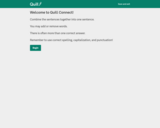
Students use either a definite article or no article in 10 fill-in-the-blank sentences. This is activity 1 of 2 in the series.
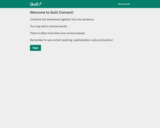
Students practice deciding when to use the before a noun by rewriting sentences, filling in the blank with one of the provided options. This is activity 2 of 2 in the series.

Present progressives describe an action in progress, or something that started in the past and is still happening. It is formed with the helping "to be" verb in the present tense and the present participle of the verb. [0:42]
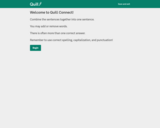
Students practice writing a variety of sentence structures by combining two or three sentences using the method of their choice.
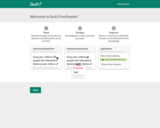
Students correct a variety errors within a text. The errors are underlined.

This TurtleDiary video lesson [14:19] includes information about adjectives. Additional lessons, games, and worksheets are available to supplement this adjectives video lesson.

Students find and correct a variety of errors within a text.

This TurtleDiary interactive video lesson [0:37] features information about prepositions. Explanations are provided to clarify how to use "at", "in", and "on" as prepositions. A game is provided to supplement this prepositions lesson.
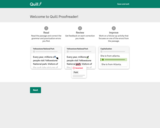
Students find and correct a variety of errors within a text.
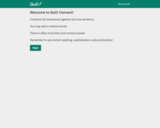
Students practice writing a variety of sentence structures by combining two or three sentences using the method of their choice.
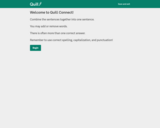
Students practice writing a variety of sentence structures by combining two or three sentences using the method of their choice.
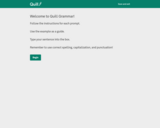
Students rewrite sentences, changing present tense to be verbs to past tense.

Among the other grammar myths that Paul Brians, an English instructor, attempts to dispel is the notion that you cannot begin a sentence with a conjunction. The site discusses other common usages and misusages.
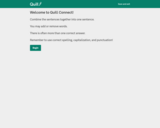
Students practice writing a variety of sentence structures by combining two or three sentences using the method of their choice.
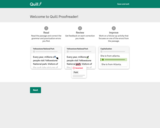
Students choose the correct demonstrative pronoun from the underlined choices throughout a text.
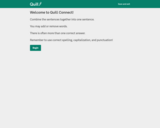
Students use the method of their choice to combine two sentences based on a short story by Jim Heynen. Students practice using various types of phrases and clauses to convey meaning and add variety to combined sentences.
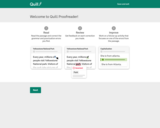
Students find and correct a variety of errors within a text.
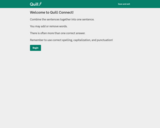
Students use the method of their choice to combine two sentences based on an article by Ben Sasse. Students practice using various types of phrases and clauses to convey meaning and add variety to combined sentences.
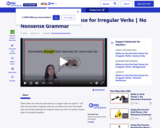
Often when we write the past tense of a regular verb, we add an "-ed" after the last letter. Irregular verbs do not follow this rule! The simple past and simple participle of irregular verbs can end in a variety of ways with no consistent pattern. [0:36]